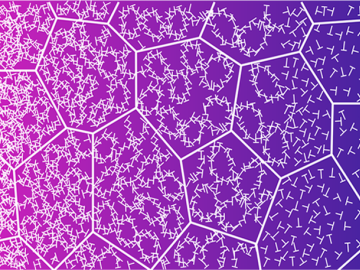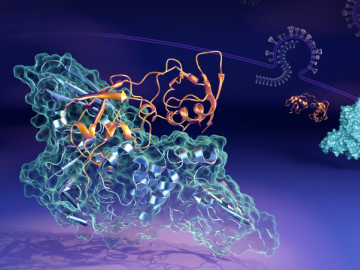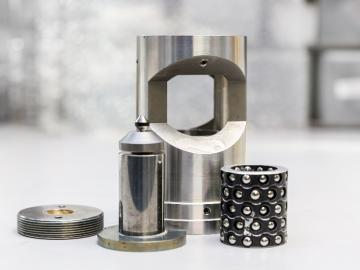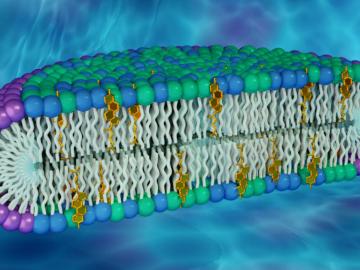
Filter News
Area of Research
- (-) Advanced Manufacturing (6)
- (-) Biological Systems (1)
- (-) Neutron Science (79)
- (-) Nuclear Science and Technology (13)
- (-) Supercomputing (43)
- Biology and Environment (25)
- Computational Biology (2)
- Computational Engineering (1)
- Computer Science (4)
- Energy Science (25)
- Fusion and Fission (17)
- Fusion Energy (11)
- Isotopes (6)
- Materials (57)
- Materials for Computing (11)
- National Security (11)
- Quantum information Science (1)
- Transportation Systems (1)
News Type
News Topics
- (-) Artificial Intelligence (25)
- (-) Biomedical (21)
- (-) Fusion (9)
- (-) Materials Science (23)
- (-) Neutron Science (80)
- (-) Physics (7)
- (-) Security (3)
- 3-D Printing/Advanced Manufacturing (18)
- Advanced Reactors (10)
- Big Data (20)
- Bioenergy (9)
- Biology (9)
- Biotechnology (1)
- Buildings (2)
- Chemical Sciences (4)
- Clean Water (2)
- Composites (3)
- Computer Science (64)
- Coronavirus (11)
- Critical Materials (3)
- Cybersecurity (2)
- Energy Storage (6)
- Environment (22)
- Exascale Computing (17)
- Fossil Energy (1)
- Frontier (18)
- Grid (1)
- High-Performance Computing (28)
- Hydropower (1)
- Isotopes (4)
- Machine Learning (11)
- Materials (17)
- Mathematics (2)
- Microscopy (3)
- Molten Salt (4)
- Nanotechnology (8)
- National Security (3)
- Nuclear Energy (31)
- Polymers (3)
- Quantum Computing (15)
- Quantum Science (15)
- Simulation (13)
- Software (1)
- Space Exploration (8)
- Summit (28)
- Transportation (6)
Media Contacts


Scientists at Oak Ridge National Laboratory have uncovered how the SARS-CoV-2 virus evades the human immune system by studying the interaction between a viral protein (PLpro) and a key immune protein (ISG15). These insights could guide the development of therapeutic drugs to block this interaction, enhancing the body’s ability to combat the virus.

An ORNL-led team comprising researchers from multiple DOE national laboratories is using artificial intelligence and computational screening techniques – in combination with experimental validation – to identify and design five promising drug therapy approaches to target the SARS-CoV-2 virus.

Researchers from NASA’s Jet Propulsion Laboratory and Oak Ridge National Laboratory successfully created amorphous ice, similar to ice in interstellar space and on icy worlds in our solar system. They documented that its disordered atomic behavior is unlike any ice on Earth.

At the Department of Energy’s Oak Ridge National Laboratory, scientists use artificial intelligence, or AI, to accelerate the discovery and development of materials for energy and information technologies.

From Denmark to Japan, the UK, France, and Sweden, physicist Ken Andersen has worked at neutron sources around the world. With significant contributions to neutron scattering and the scientific community, he’s now serving in his most important role yet.

Researchers at Oak Ridge National Laboratory’s Spallation Neutron Source have developed a diamond anvil pressure cell that will enable high-pressure science currently not possible at any other neutron source in the world.

Twenty-seven ORNL researchers Zoomed into 11 middle schools across Tennessee during the annual Engineers Week in February. East Tennessee schools throughout Oak Ridge and Roane, Sevier, Blount and Loudon counties participated, with three West Tennessee schools joining in.

Researchers believe that proteins could behave differently in lipid raft environments, compared to non-raft regions in a membrane, but this hypothesis has not been fully evaluated. One reason is that membrane models used to study membrane proteins rarely contain rafts.

Oak Ridge National Laboratory researchers have demonstrated that a new class of superalloys made of cobalt and nickel remains crack-free and defect-resistant in extreme heat, making them conducive for use in metal-based 3D printing applications.


